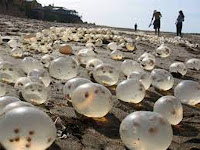Am I just being lazy? Maybe I'm merely bored. Or could it be
procrastination?
I've had the most terrible time concentrating on anything lately. At least that's the way it seems.
I moved three years ago and still have a ton of unpacked boxes in the garage and the third bedroom. But I'm not sure if I'm purposely distracting myself, allowing myself to be distracted by things going on around me, or simply not able to maintain my concentration. And it's not that I'm bored because I don't have anything to do. I have plenty to do (remember all those unpacked boxes I mentioned?). In fact, I'm behind schedule with my to do list. Could it possibly be that I'm just procrastinating.
I currently have four manuscripts in various stages of completion between page one and page last, three projects where I'm working on the storyline and synopsis and haven't actually started writing yet, and two basically completed manuscripts that are in the let them sit for a little while then go through them one last time stage before submitting them to a publisher.
Being a writer requires self-discipline. Being self-employed and working from home also requires that same discipline. Being a full time writer (no day job) who works from home requires twice the discipline. When the words aren't flowing from the brain directly to the keyboard, it's very easy to be distracted by anything and everything. So easy to procrastinate. After all, there's always later.
(Oh, look…the mailman is across the street. He'll be at my house in another five minutes. Maybe I should go to the front door and wait. After all, I wouldn't want to have my electric bill sitting in my mailbox any longer than absolutely necessary.)
I was so desperate for something else to do this morning (other than any of the items on my to do list) that I actually started to look at all the stuff I packed in my old office and moved with me to the new house—things I should have thrown out rather than move them. I went through a huge stack of stuff from boxes, almost all of it printed emails, news stories from online, research information from various websites. That huge stack ended up in two stacks. One was the throw it away because it's no longer relevant for various reasons and the other one was the file it away where it belongs. So, I tossed the first stack and the second stack went into the appropriate hard copy file folders (and returned to boxes. Not exactly what you could call making progress with all the unpacked boxes.) Unfortunately, that was only one stack of stuff out of many. It was the newest stack, so my guess is that all the others will be mostly throw it away things when I finally get around to doing something with it.
Just finished unloading the dishwasher and putting the clean dishes away, something that obviously needed to be done RIGHT NOW rather than a couple of hours later. Oh, yeah…while I was in the kitchen I got out my Mr. Coffee Iced Tea maker and made a pitcher of iced tea. That's not procrastinating, is it?
Now, where was I. Oh, yes…my blog. I need to pick a topic for my blog and then get it written. I print out interesting articles and news stories when I come across them online and set them aside as possible topics for a blog. Hmmm…it seems to me that I just went through a huge stack of paper that included some printouts of articles and news stories. Maybe I should go and take another look at the ones I kept.
Or not.
It's about dinner time and I'm getting hungry. Good thing I took those dishes out of the dishwasher several hours ago. Now I can use them.
Maybe I'm just bored in general with being cooped up inside the house. Maybe I just need a break like being able to get out of town, take a trip somewhere. Yeah…that's it! I can transfer all my work in progress files to my laptop and take it with me. I'll be able to get lots of work done while I'm gone because there won't be anything around to distract me like there is in my own house. Now where did I put that U.S. Atlas? Which box is it packed in?
Oh, wait a minute. I need to do laundry before I can go out of town. And I have a doctor appointment on Tuesday, and something else on my schedule for Wednesday night. I guess I don't need that Atlas after all.
So…I might as well get back to work. (Hmmm…I wonder what I should fix for dinner. I probably need to go to the grocery store.)
Ah Ha! I think I just came up with the topic for my blog.






















